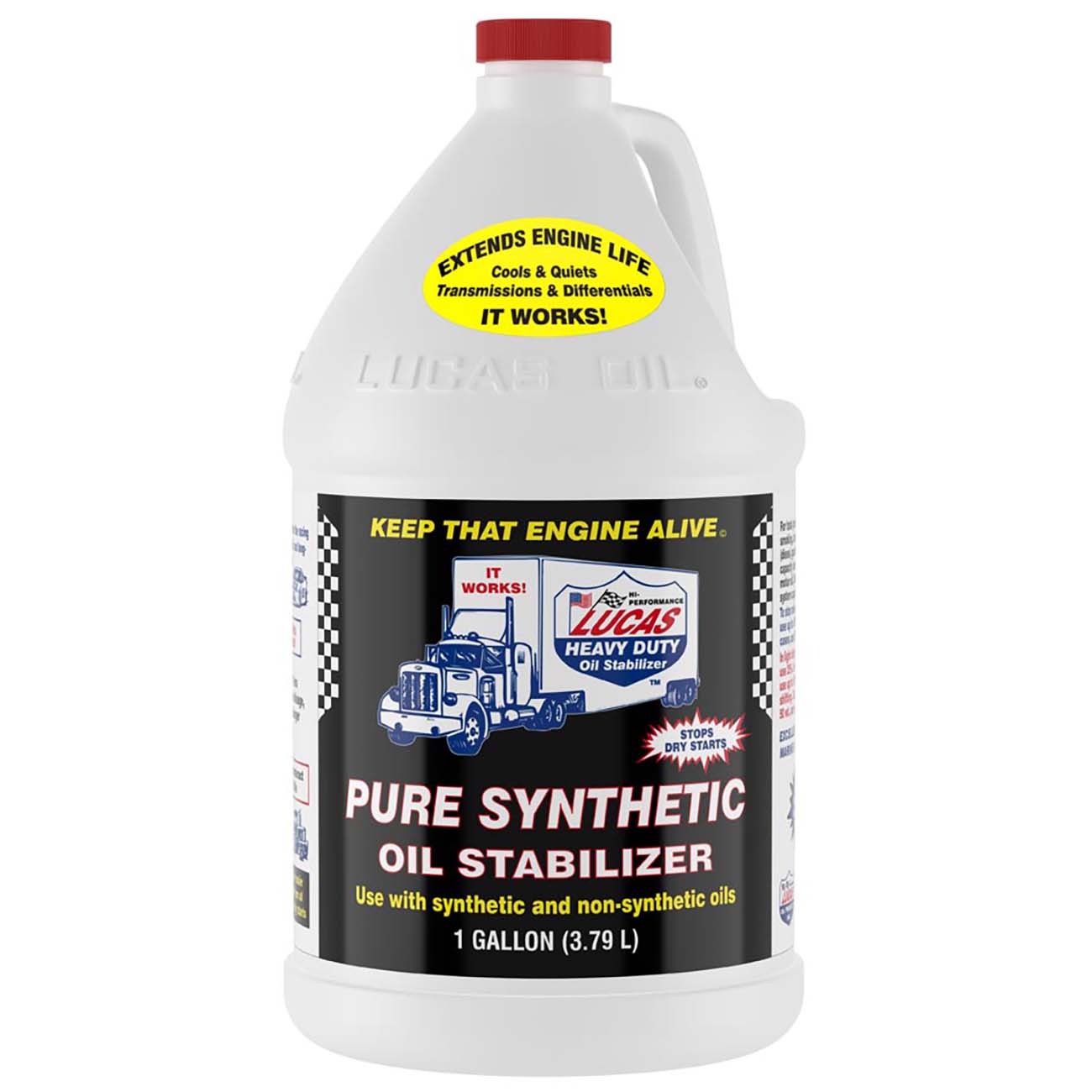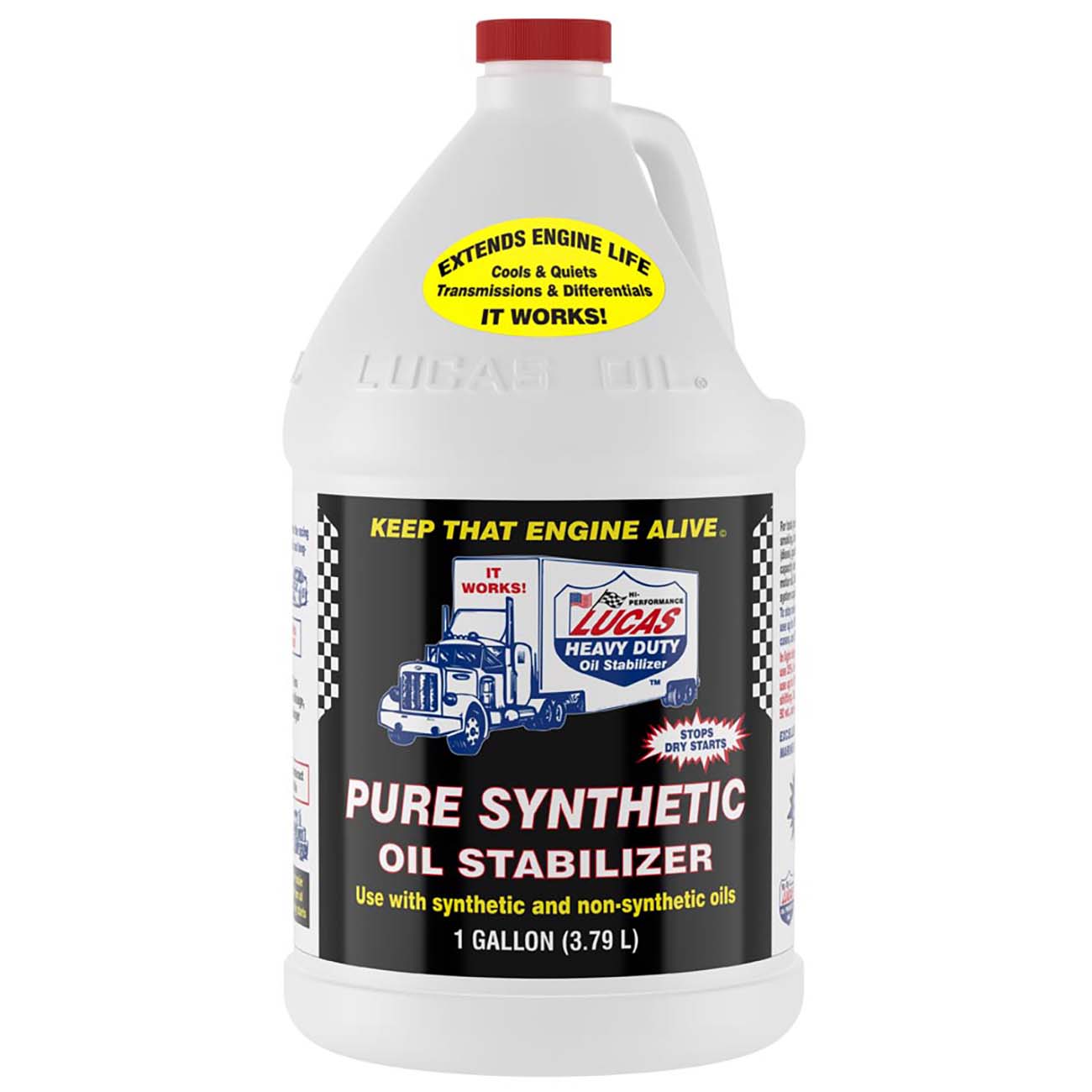Answer
Sep 04, 2024 - 06:56 AM
Whether or not you should use the entire bottle of 10131 Lucas Oil Synthetic Heavy Duty (H/D) Oil Stabilizer depends on your vehicle's oil capacity and your specific needs. Here’s a guide to help you decide how much to use:
Guidelines for Using Lucas Oil Synthetic H/D Oil Stabilizer:-
Determine Your Vehicle's Oil Capacity:
- First, find out your vehicle's oil capacity, which is typically listed in the owner’s manual. It’s important to know this so you don’t overfill your engine.
-
Recommended Amount of Stabilizer:
- Normal Use: Lucas Oil recommends using 20% of the total oil capacity as the stabilizer.
- Example: If your engine holds 5 quarts (4.7 liters) of oil, you would use 1 quart (0.95 liters) of the stabilizer. This means you would use the entire bottle of 10131 (which is 1 gallon or 4 quarts) in vehicles with larger oil capacities (like trucks or diesel engines), or just a portion for smaller engines.
- Heavy-Duty or High-Stress Use: For vehicles that are frequently towing, off-roading, racing, or otherwise subjected to high-stress conditions, you can use up to 50% of the oil capacity.
- Example: For a 5-quart (4.7 liters) engine capacity, you could use up to 2.5 quarts (2.4 liters) of the stabilizer.
- Normal Use: Lucas Oil recommends using 20% of the total oil capacity as the stabilizer.
-
How to Decide How Much to Use:
- Smaller Engines (Cars, Light Trucks): Likely will not require the entire 1-gallon bottle. In most standard vehicles, the oil capacity ranges from 4 to 6 quarts, so you would typically use around 1 quart of the stabilizer (20% of the capacity).
- Larger Engines (Heavy-Duty Trucks, Diesel Engines): May benefit from using a larger portion of the stabilizer, potentially up to the entire bottle, depending on the engine's oil capacity and the operating conditions.
-
Avoid Overfilling:
- It’s important not to exceed the recommended oil level in your engine. Overfilling can lead to foaming, reduced lubrication effectiveness, and potential engine damage. Always check the oil level with the dipstick after adding the stabilizer and topping off with oil as needed.
- Warm Up the Engine: Run your vehicle for a few minutes to warm up the oil, making it easier to mix with the stabilizer.
- Check the Oil Level: Ensure the oil level is not above the full mark. If it is, drain some oil to accommodate the stabilizer.
- Add the Stabilizer: Slowly pour the desired amount of Lucas Oil Stabilizer into the engine through the oil filler cap using a funnel to avoid spills.
- Top Off With Oil: If needed, add engine oil to bring the level back up to the full mark after adding the stabilizer.
- Run the Engine: Start the engine and let it run for a few minutes to circulate and mix the stabilizer with the oil thoroughly.
- Check the Oil Level Again: Recheck the oil level to ensure it is at the proper level.
- Do not use the entire bottle unless your engine's oil capacity and usage conditions specifically call for it (larger capacity engines under heavy stress).
- Adjust the amount based on your vehicle’s oil capacity and the recommended usage percentages.
- Consult your vehicle’s manual and consider your engine's specific needs to avoid overfilling and to achieve the best results.





Add New Comment